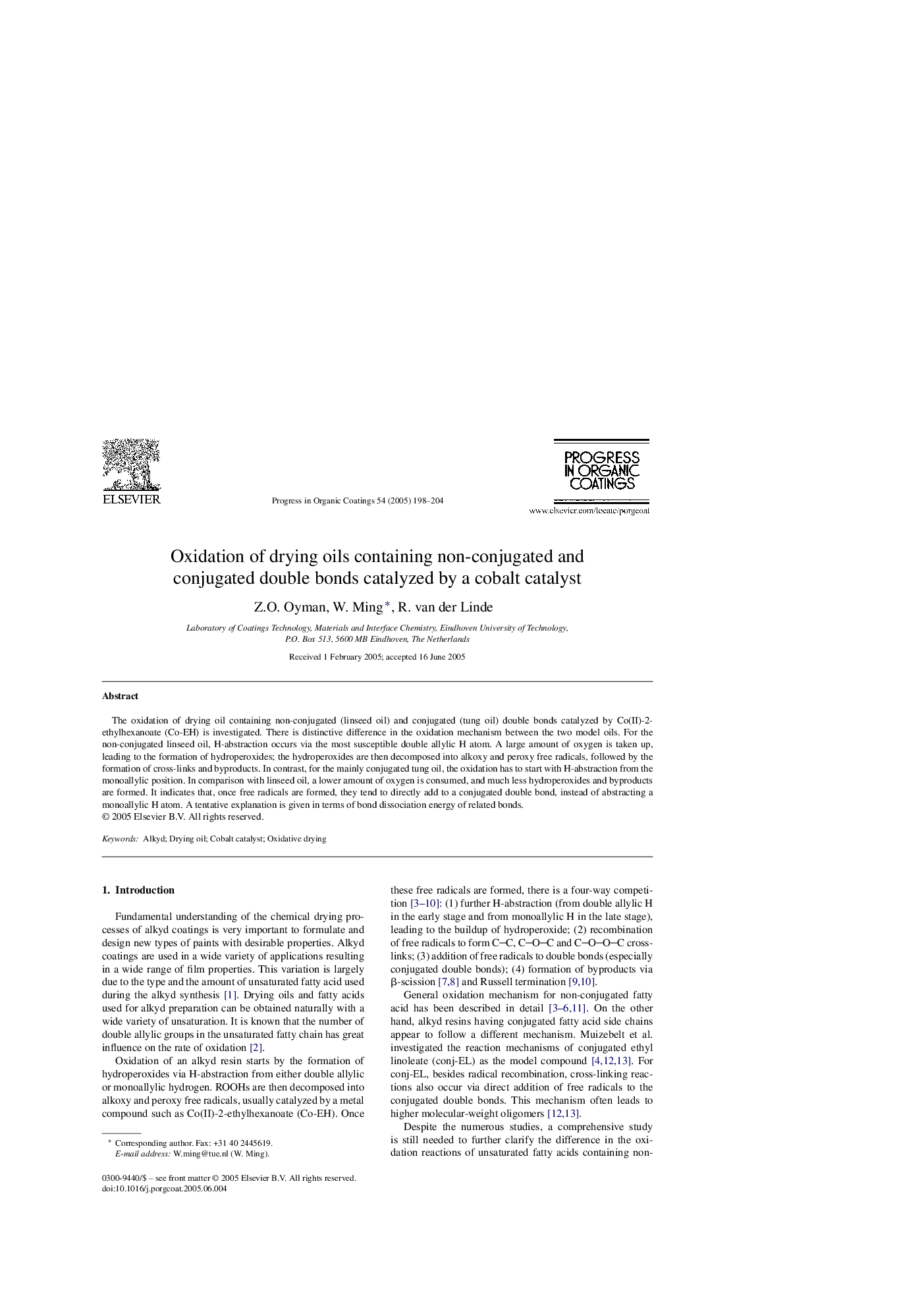| Article ID | Journal | Published Year | Pages | File Type |
|---|---|---|---|---|
| 10398097 | Progress in Organic Coatings | 2005 | 7 Pages |
Abstract
The oxidation of drying oil containing non-conjugated (linseed oil) and conjugated (tung oil) double bonds catalyzed by Co(II)-2-ethylhexanoate (Co-EH) is investigated. There is distinctive difference in the oxidation mechanism between the two model oils. For the non-conjugated linseed oil, H-abstraction occurs via the most susceptible double allylic H atom. A large amount of oxygen is taken up, leading to the formation of hydroperoxides; the hydroperoxides are then decomposed into alkoxy and peroxy free radicals, followed by the formation of cross-links and byproducts. In contrast, for the mainly conjugated tung oil, the oxidation has to start with H-abstraction from the monoallylic position. In comparison with linseed oil, a lower amount of oxygen is consumed, and much less hydroperoxides and byproducts are formed. It indicates that, once free radicals are formed, they tend to directly add to a conjugated double bond, instead of abstracting a monoallylic H atom. A tentative explanation is given in terms of bond dissociation energy of related bonds.
Keywords
Related Topics
Physical Sciences and Engineering
Chemical Engineering
Process Chemistry and Technology
Authors
Z.O. Oyman, W. Ming, R. van der Linde,
